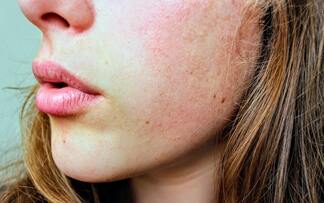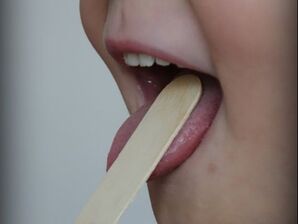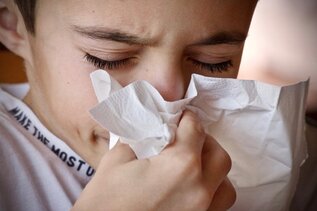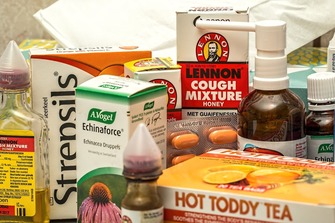|
Most rashes need to be evaluated in the office. There are many different types and causes of rashes.
Call our office immediately if:
Call our office during regular hours if:
Comments
Babies commonly grunt, push, strain, draw up their legs and become flushed in the face during passage of BMs. However, these behaviors are normal as long as their stool is soft. The painful passage of hard stools is the most reliable sign of constipation in infants and in older children. These children feel a desperate urge to have a bowel movement (BM) but are unable to pass a BM after straining and pushing for more than 10 minutes.
Some children begin to retain stool in order to avoid the pain of passing a hard BM. These children may start to soil themselves as the watery stool in the upper intestines leaks around the impaction. Constipation is often due to a diet that does not include enough fiber or fluids or due to drinking or eating too many dairy products or starchy foods. It is also caused by repeatedly waiting too long to move the bowels. If constipation begins during toilet training, too much pressure may be being placed on the child. Changes in the diet frequently relieve constipation. After your child is better, be sure to keep him on a non-constipating diet so that it doesn’t happen again. Diet treatment for infants less than 1 year of age include:
Diet treatment for infants older than 1 year of age:
Call our office immediately if:
Call our office during regular hours if:
Most vomiting is caused by a viral infection of the stomach (viral gastroenteritis) or eating something that is tainted. It can occur with diarrhea or by itself. In infants, it is important to distinguish between normal amounts of spitting up and vomiting. Many normal infants may have mild reflux and may spit up small amounts of undigested milk soon after feeding. Often, the viral type is associated with diarrhea. The expected course is usually 12 to 24 hours Dietary changes usually speed recovery. If diarrhea is present, it usually continues for several days to a week.
Home care for vomiting includes special dietary changes according to age and normal diet. For bottle-fed infants less than 1 year of age, offer oral rehydration solutions (ORS), such as Infalyte or Pedialyte, for 8 hours. Offer small amounts (1 teaspoon) every 5 minutes for the first hour, then 2 teaspoons every 10 minutes, then 3 teaspoons every 15 minutes. You should aim for total of about 2 ounces per hour, After 4 hours without vomiting, increase the amount. After 6-8 hours without vomiting, return to formula. For infants more than 4 months of age, also return to cereal, bananas, etc. A normal diet is okay in 24 to 48 hours. If your child refuses the Pedialyte, you may give Gatorade, herbal tea, chicken broth or flat sodas. Coca cola syrup is particularly effective in “settling” the stomach.” Try to avoid diet sodas and plain water since they lack any sugar and electrolytes. Once your child has managed to tolerate fluids for at least four hours, you may offer mild foods as tolerated. For breast-fed infants, reduce the amount or feeding and feed more frequently. Your goal is to avoid filling the stomach. Nurse for 5 minutes every 1-2 hours. After 6-8 hours without vomiting, return to regular breast-feeding. For children over 1 year of age, offer clear fluids (water, Pedialyte, or Gatorade) in small amounts for 8 hours. Give small amounts (1 tablespoon) every 10 minutes. After 4 hours without vomiting, increase the amount. For severe vomiting, rest the stomach completely for 1 hour, then start over with smaller amounts. Add bland foods after 6 hours without vomiting. Stay on bland, starchy foods (saltine crackers, white bread, rice, mashed potatoes, etc.) for 24 hours. Call our office immediately if:
Most sore throats are caused by viruses and are part of a cold. However, about 30% are due to the strep bacteria.
A throat culture or rapid strep test is the only way to distinguish strep throat from viral infection. To provide local pain relief, children over 8 years of age can gargle with warm salt water (1/4 teaspoon of salt per 6-8 oz water). Children over 4 years of age can suck on hard candy, like butterscotch or lollipops, as often as necessary. Children over 1 year can sip on warm chicken broth. The common cold involves an array of symptoms including runny or stuffy nose, congestion, fever, sore throat, cough, hoarseness, red eyes, and swollen lymph nodes in the neck. A cold or URI is a viral infection of the nose and throat.
Cold viruses are spread from one person to another by droplets through hand contact, coughing, and sneezing, not by cold air or drafts. Since there are up to 200 different cold viruses, healthy children still commonly contract six to ten colds each year. A typical course of cold symptoms may include a fever that lasts 3 days, nose and throat symptoms that last 1- 2 weeks, and a cough that may linger for 2 to 3 weeks. The main things to watch for are secondary bacterial infections such as ear infections, yellow drainage from the eyes, sinus pressure or pain, or difficulty breathing. Home care remedies usually do not impact how long a cold lasts, but can relieve many of the symptoms. Examples of home treatment for associated symptoms include:
The older child should try to gently blow his nose after instilling the saline drops. Use nasal washes 2-4 times per day or whenever your child is having trouble breathing through his nose. When your child sleeps you may use a cool mist humidifier in his or her room. The most effective steam room, however, is your smallest bathroom with the shower running on hot. Sit in the steamy room with your child for 20 minutes three or more times a day. Most are due to a viral infection and are part of a cold. Keep in mind that coughing clears the lungs and protects them.
Use cough drops for children over 4 years old and warm liquids, like chicken broth for children over 1 year of age. We generally avoid the use of cough suppressants. Dry air tends to make coughs worse. Use a cool mist humidifier in your child’s bedroom to loosen a dry cough. A steamy bathroom works well. Encourage plenty of fluid intake. Call our office immediately if:
Call our office during regular hours if:
|
AuthorThe staff of Panda Pediatrics, located in Washington, D.C. Categories
All
Archives |
|
Schedule your visit today!
|
HOURSMon: 9am-5pm
Tues: 9am-5pm Wed: 9am-5pm Thurs: 9am-5pm Fri: 9am-2pm Closed daily 12pm-1pm. |
Phone: 202-466-5350
Fax: 202-466-8555 After Hours: 703-535-1856 Email: [email protected] Billing: 1-888-969-3735, option# 1 |
ADDRESS2440 M Street NW
Suite #422 Washington, DC 20037 POLICIES |






 RSS Feed
RSS Feed

